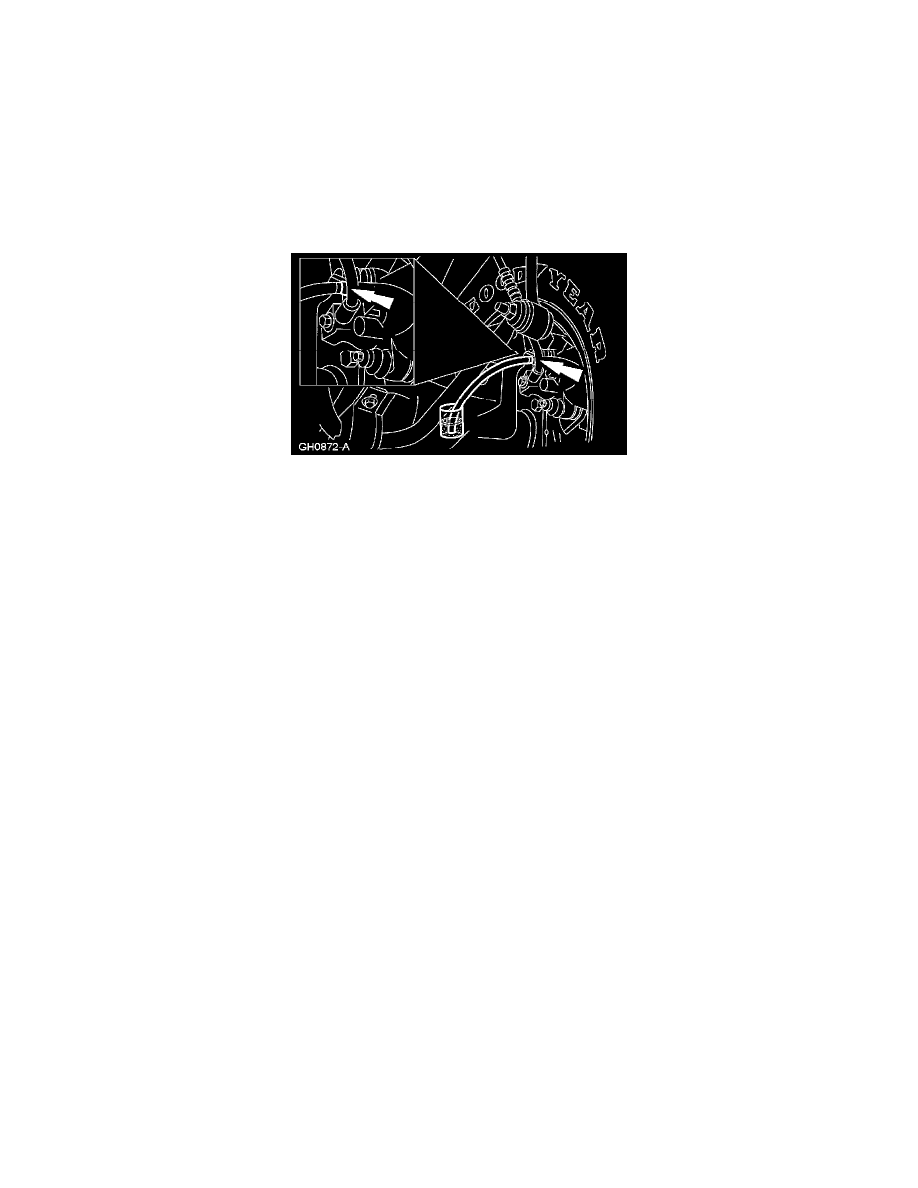Town Car V8-4.6L VIN V Flex Fuel (2006)

fluid.
2. NOTE: Master cylinder pressure bleeder adapter tools are available from various manufacturers of pressure bleeding equipment. Follow the
instructions of the manufacturer when installing the adapter.
NOTE: For ABS only vehicles, open the master cylinder bleed screw until clear, bubble-free fluid flows from the tube into the cup.
Install the bleeder adapter to the brake master cylinder reservoir, and attach the bleeder tank hose to the fitting on the adapter.
^
Refill the brake master cylinder reservoir, as necessary.
3. NOTE: Bleed from the longest to the shortest brake line. Make sure the bleeder tank contains enough DOT 3 motor vehicle brake fluid to
complete the bleeding operation.
Place a box end wrench on the bleeder screw. Attach a rubber drain tube to the bleeder screw, and submerge the free end of the tube in a container
partially filled with DOT 3 motor vehicle brake fluid.
4. Open the valve on the bleeder tank.
5. NOTE: Have an assistant press the brake pedal approximately 25 mm (0.98 inch) once every 2 seconds while pressure bleeding. This will
enhance the pressure bleeding procedure.
Loosen the bleeder screw. Leave open until clear, bubble-free brake fluid flows. Wait 15 seconds after clear, bubble-free fluid flows through the
rubber hose. Then, tighten the bleeder screw and remove the rubber hose.
^
Tighten to 21 Nm (15 ft. lbs.).
6. Continue bleeding the brake system repeating Step 5 at all wheel ends.
7. Close the bleeder tank valve. Remove the tank hose from the adapter, and remove the adapter.
8. Inspect the brake fluid level in the master cylinder reservoir.
^
Fill the brake master cylinder reservoir with DOT 3 motor vehicle brake fluid, if necessary.
9. Install the reservoir cap.
10. NOTE: If the brake pedal remains spongy, air may be trapped in the HCU.
If the brake pedal remains spongy after pressure bleeding, perform the Anti-Lock Brake System (ABS) Hydraulic Control Unit Bleeding procedure
with the diagnostic tool.
Manual Bleeding
WARNING: Use of any brake fluid other than approved DOT 3 will cause permanent damage to brake components and will render the
brakes inoperative. Failure to follow these instructions may result in personal injury.
WARNING: Brake fluid contains polyglycol ethers and polyglycols. Avoid contact with eyes. Wash hands thoroughly after handling. If brake
fluid contacts eyes, flush eyes with running water for 15 minutes. Get medical attention if irritation persists. If taken internally, drink water
and induce vomiting. Get medical attention immediately. Failure to follow these instructions may result in personal injury.
CAUTION: Do not allow the brake master cylinder reservoir to run dry during the bleeding operation. Keep the brake master cylinder reservoir filled
with the specified brake fluid. Never reuse the brake fluid that has been drained from the hydraulic system.
CAUTION: Brake fluid is harmful to painted and plastic surfaces. If brake fluid is spilled onto a painted or plastic surface, immediately wash it with
water.
NOTE: Pressure bleeding the brake system at 207 - 345 kPa (30 - 50 psi) is preferred to manual bleeding.
NOTE: When any part of the hydraulic system has been disconnected for repair or installation of new components, air can get into the system and
cause spongy brake pedal action. This requires bleeding of the hydraulic system, including the hydraulic control unit (HCU) after it has been correctly
